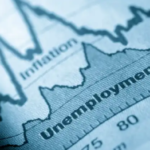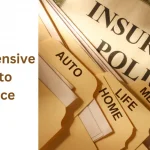As September approaches, financial experts are buzzing with anticipation. The Federal Reserve is expected to implement its first interest rate cut in years on September 18th. This potential shift in monetary policy has many Americans wondering: How will this impact the auto industry, and more importantly, what does it mean for those looking to finance a new set of wheels?

The Road So Far: A Bumpy Ride for Car Buyers
Over the past few years, car shoppers have faced a perfect storm of challenges:
- Skyrocketing vehicle prices (both new and used)
- Supply chain disruptions limiting inventory
- Rising interest rates making financing more expensive
To put this into perspective, let’s look at some eye-opening statistics:
- In Q2 2021, the average monthly payment for a new car was $597
- Fast forward to Q2 2024, and that figure has jumped to a whopping $740
That’s a staggering 24% increase in just three years! This surge is due to a combination of higher sticker prices and steeper loan rates.
Will Rate Cuts Immediately Slash Your Car Payment?
While the prospect of Fed rate cuts is promising, don’t expect an instant drop in auto loan rates. Here’s why:
- Gradual Process: The Fed is likely to implement rate cuts slowly over time, not all at once.
- Indirect Impact: Auto loan rates don’t directly mirror the federal funds rate. They’re more closely tied to longer-term bond yields.
- Lender Caution: With some borrowers struggling to make payments, lenders may be hesitant to quickly lower rates.
What Can Car Shoppers Expect?
According to industry experts, here’s a realistic timeline for rate relief:
- Short-term (2-3 months after first cut): Slight decrease in auto loan rates (0.25% – 0.5%)
- Spring 2025: Potential for rates to be a full percentage point lower
- Long-term (2+ years): Rates could eventually drop 2.5 to 3 percentage points
Jonathan Smoke, chief economist at Cox Automotive, predicts: “Within the next two years, we should get to a new normal of 7.5% to 8% rates on average for new car loans.”
Tips for Prospective Car Buyers
- Be Patient: If you can wait a few months, you might secure a better rate.
- Check Your Credit: Your credit score significantly impacts your loan terms. Work on improving it if needed.
- Shop Around: Don’t settle for the first offer. Compare rates from multiple lenders.
- Consider Timing: Year-end sales and model changeovers can lead to better deals.
- Stay Informed: Keep an eye on economic news and Fed announcements.
The Bigger Picture: Economic Outlook
Mark Zandi, chief economist at Moody’s, offers an optimistic forecast:
- Expects six quarter-point rate cuts through the end of 2025
- Predicts the five-year car loan rate will approach 7% by late 2025
- Projects new vehicle sales to reach 16.7 million units in 2025
While a recession isn’t out of the question (Zandi puts the odds at 25%), the overall economic outlook remains cautiously positive.
Bottom Line
The potential Fed rate cuts offer a glimmer of hope for car shoppers burdened by high prices and steep financing costs. While relief won’t be immediate, patience and smart financial planning can help you navigate this changing landscape. As always, do your research, know your budget, and be prepared to negotiate for the best deal possible.
Remember, a car is a significant investment. With some strategic timing and a keen eye on market trends, you could find yourself in the driver’s seat of a great deal in the coming months.







